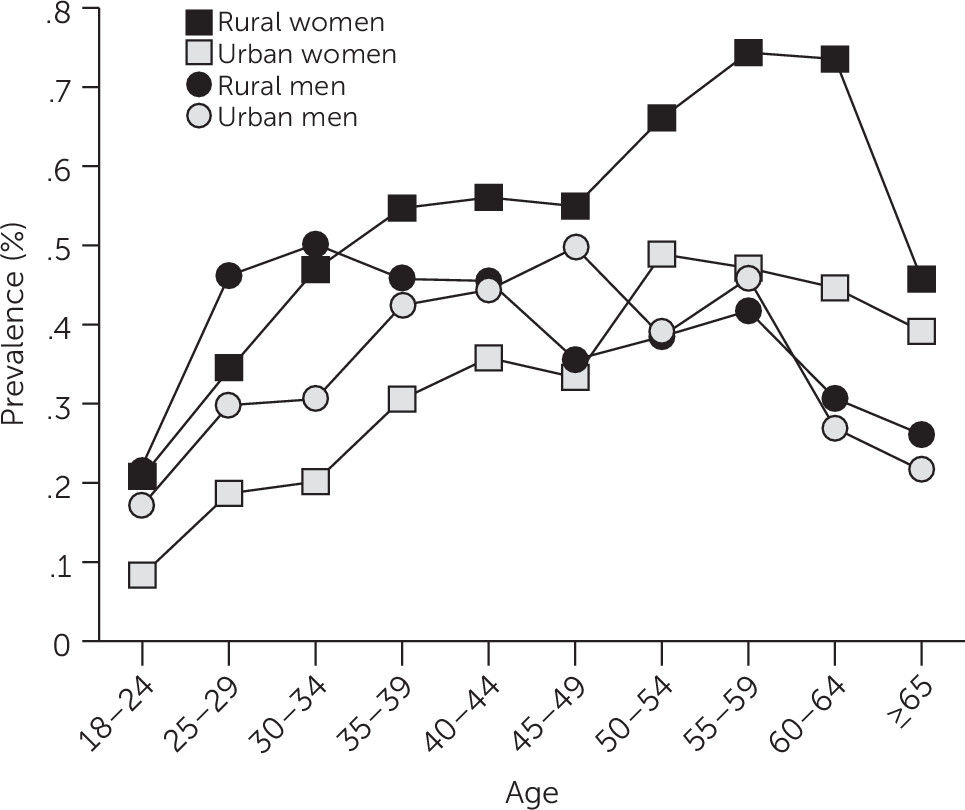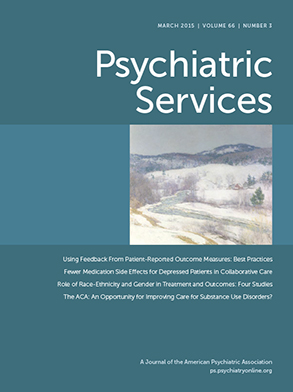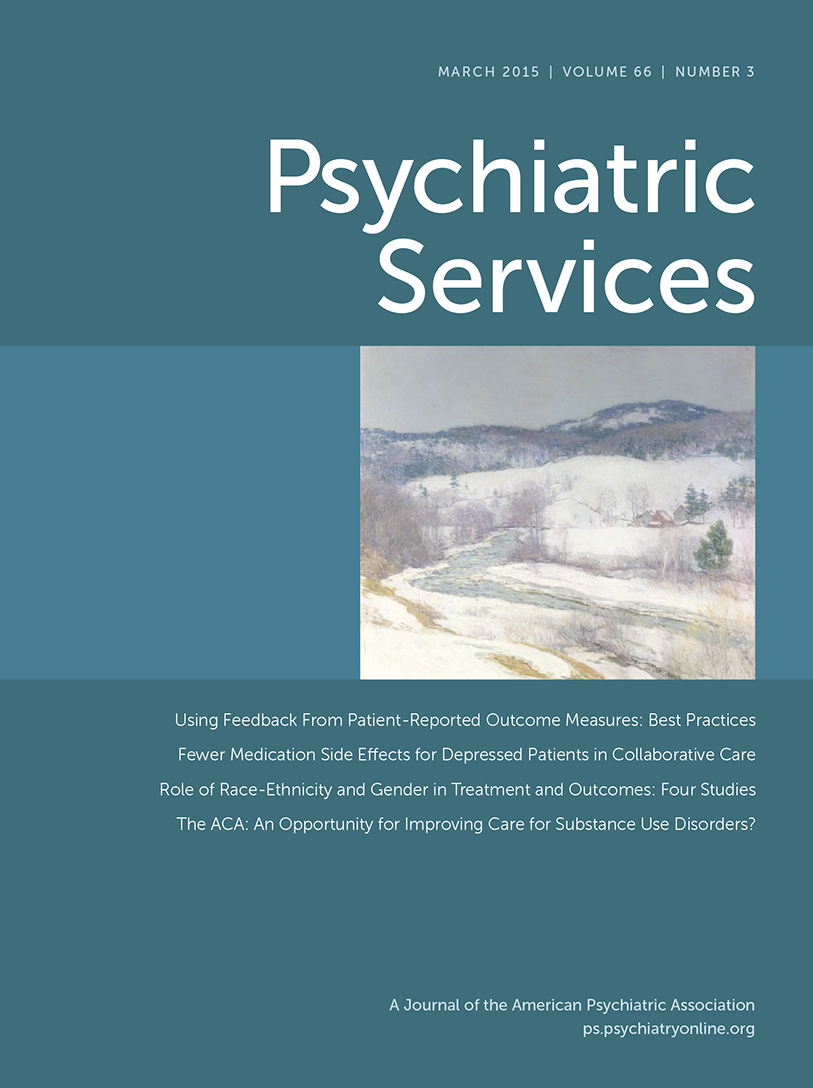Schizophrenia-Related Disability in China: Prevalence, Gender, and Geographic Location
Abstract
Objective:
Methods:
Results:
Conclusions:
Methods
Second China National Sample Survey on Disabilities
Regions of China
Schizophrenia Disability
Analytic Strategy
Results
| Group and characteristicc | Urbanb | Ruralb | Men | Women | ||||
|---|---|---|---|---|---|---|---|---|
| N | Weighted | N | Weighted | N | Weighted | N | Weighted | |
| %d | %d | %d | %d | |||||
| All participants | ||||||||
| Age (years) | ||||||||
| 18–24 | 70,378 | 12.0 | 150,121 | 11.5 | 110,489 | 11.6 | 110,010 | 11.8 |
| 25–44 | 305,149 | 50.3 | 524,333 | 45.2 | 413,042 | 46.6 | 416,440 | 47.0 |
| 45–64 | 212,355 | 27.5 | 396,117 | 31.2 | 307,307 | 30.7 | 301,165 | 29.3 |
| ≥65 | 88,167 | 10.2 | 162,585 | 12.1 | 119,120 | 11.0 | 131,632 | 11.9 |
| Marital status | ||||||||
| Single | 83,081 | 13.7 | 144,312 | 11.4 | 144,339 | 15.5 | 83,054 | 8.9 |
| Married | 538,622 | 79.5 | 984,491 | 80.7 | 752,662 | 79.3 | 770,451 | 81.4 |
| Divorced | 13,371 | 1.8 | 10,381 | .8 | 14,293 | 1.4 | 9,459 | .8 |
| Widowed | 40,975 | 5.0 | 93,972 | 7.1 | 38,664 | 3.8 | 96,283 | 9.0 |
| Annual household income in 2005 (US$) | ||||||||
| 0–199 | 4,229 | .6 | 36,556 | 2.8 | 20,677 | 2.2 | 20,108 | 2.0 |
| 200–999 | 80,421 | 12.3 | 423,606 | 33.6 | 253,685 | 27.2 | 250,342 | 26.5 |
| 1,000–1,999 | 166,012 | 25.8 | 424,688 | 34.9 | 293,051 | 31.8 | 297,649 | 32.1 |
| 2,000–4,999 | 290,469 | 43.5 | 307,194 | 25.3 | 295,652 | 30.9 | 302,011 | 31.4 |
| ≥5,000 | 134,918 | 17.7 | 41,112 | 3.4 | 86,893 | 7.9 | 89,137 | 8.0 |
| Education | ||||||||
| Illiterate | 45,777 | 6.1 | 247,119 | 18.8 | 74,283 | 7.5 | 218,613 | 21.9 |
| Primary school or less | 112,128 | 16.6 | 440,995 | 35.5 | 275,314 | 29.0 | 277,809 | 29.8 |
| Junior high school | 225,685 | 34.9 | 432,676 | 36.6 | 371,083 | 40.7 | 287,278 | 31.4 |
| Senior high school or more | 292,454 | 42.4 | 112,351 | 9.2 | 229,271 | 22.8 | 175,534 | 16.9 |
| Participants with schizophrenia disability | ||||||||
| Age (years) | ||||||||
| 18–24 | 84 | 4.6 | 298 | 5.5 | 212 | 6.3 | 170 | 4.4 |
| 25–44 | 963 | 49.4 | 2,407 | 48.8 | 1705 | 54.6 | 1,665 | 44.3 |
| 45–64 | 880 | 36.2 | 1,958 | 35.8 | 1,136 | 31.7 | 1,702 | 39.5 |
| ≥65 | 269 | 9.8 | 569 | 9.8 | 281 | 7.4 | 557 | 11.8 |
| Marital status | ||||||||
| Single | 701 | 33.7 | 1,352 | 26.3 | 1,672 | 51.5 | 381 | 8.8 |
| Married | 1,029 | 46.5 | 3,069 | 59.1 | 1,118 | 32.9 | 2,980 | 74.9 |
| Divorced | 253 | 11.7 | 335 | 6.2 | 391 | 11.6 | 197 | 4.4 |
| Widowed | 213 | 8.2 | 476 | 8.4 | 153 | 4.0 | 536 | 11.9 |
| Annual household income in 2005 (US$) | ||||||||
| 0–199 | 91 | 4.7 | 585 | 11.1 | 424 | 13.3 | 252 | 6.3 |
| 200–999 | 600 | 30.1 | 2,655 | 50.7 | 1,420 | 43.7 | 1,835 | 46.9 |
| 1,000–1,999 | 648 | 29.3 | 1,322 | 25.5 | 792 | 23.8 | 1,178 | 28.7 |
| 2,000–4,999 | 684 | 29.6 | 597 | 11.3 | 584 | 16.1 | 697 | 15.8 |
| ≥5,000 | 173 | 6.3 | 73 | 1.4 | 114 | 3.0 | 132 | 2.4 |
| Education | ||||||||
| Illiterate | 300 | 14.0 | 1,785 | 33.3 | 558 | 16.7 | 1,527 | 38.1 |
| Primary school or less | 476 | 22.9 | 1,862 | 35.8 | 1060 | 32.9 | 1,278 | 32.1 |
| Junior high school | 774 | 34.9 | 1,234 | 24.2 | 1,110 | 33.3 | 898 | 21.6 |
| Senior high school or more | 646 | 28.1 | 350 | 6.7 | 605 | 17.0 | 391 | 8.2 |
| Region and groupb | Survey | Weighted | Schizophrenia disability | Mood disorder–related disability | ||
|---|---|---|---|---|---|---|
| participants | N | Prevalence (%)c | 95% CI | Prevalence (%)c | 95% CI | |
| People’s Republic of China | ||||||
| Urban | 676,049 | 315,756,726 | .32 | .31–.34 | .04 | .03–.05 |
| Rural | 1,233,156 | 670,082,289 | .45 | .43–.46 | .05 | .05–.06 |
| Urban men | 329,300 | 153,681,086 | .35 | .32–.37 | .03 | .02–.04 |
| Urban women | 346,749 | 162,075,641 | .30 | .28–.32 | .05 | .04–.06 |
| Rural men | 620,658 | 334,903,892 | .38 | .37–.40 | .04 | .03–.04 |
| Rural women | 612,498 | 335,178,397 | .51 | .49–.53 | .07 | .06–.07 |
| Northeast | ||||||
| Urban | 86,855 | 39,735,700 | .29 | .25–.33 | .02 | .01–.03 |
| Rural | 99,898 | 48,831,527 | .38 | .34–.42 | .04 | .03–.06 |
| Urban men | 42,371 | 19,415,460 | .26 | .21–.32 | .01 | .00–.02 |
| Urban women | 44,484 | 20,320,239 | .32 | .27–.37 | .03 | .01–.05 |
| Rural men | 51,120 | 24,838,748 | .27 | .22–.32 | .03 | .02–.05 |
| Rural women | 48,778 | 23,992,780 | .49 | .43–.56 | .06 | .03–.08 |
| North Coast | ||||||
| Urban | 125,781 | 43,789,989 | .27 | .24–.31 | .04 | .03–.05 |
| Rural | 179,186 | 106,491,889 | .39 | .36–.43 | .07 | .05–.08 |
| Urban men | 61,123 | 21,339,988 | .27 | .22–.32 | .03 | .01–.04 |
| Urban women | 64,658 | 22,450,001 | .28 | .22–.34 | .05 | .03–.07 |
| Rural men | 89,490 | 52,935,273 | .3 | .25–.35 | .04 | .02–.05 |
| Rural women | 89,696 | 53,556,616 | .49 | .44–.53 | .09 | .07–.11 |
| East Coast | ||||||
| Urban | 102,713 | 44,446,169 | .35 | .31–.38 | .06 | .05–.08 |
| Rural | 122,979 | 71,210,427 | .42 | .38–.45 | .09 | .07–.11 |
| Urban men | 50,019 | 21,563,105 | .37 | .31–.43 | .05 | .02–.07 |
| Urban women | 52,694 | 22,883,064 | .33 | .28–.38 | .08 | .05–.11 |
| Rural men | 60,074 | 34,575,859 | .39 | .34–.44 | .06 | .04–.08 |
| Rural women | 62,905 | 36,634,568 | .44 | .39–.49 | .11 | .09–.14 |
| South Coast | ||||||
| Urban | 62,917 | 38,083,579 | .39 | .32–.47 | .05 | .03–.07 |
| Rural | 107,207 | 61,717,497 | .58 | .53–.64 | .06 | .04–.08 |
| Urban men | 30,630 | 18,530,879 | .51 | .39–.62 | .05 | .03–.08 |
| Urban women | 32,287 | 19,552,700 | .29 | .23–.35 | .05 | .02–.08 |
| Rural men | 53,988 | 30,840,392 | .59 | .52–.66 | .05 | .03–.07 |
| Rural women | 53,219 | 30,877,105 | .58 | .50–.66 | .07 | .04–.09 |
| Yellow River | ||||||
| Urban | 78,412 | 39,642,494 | .29 | .25–.32 | .05 | .02–.07 |
| Rural | 177,586 | 103,068,518 | .39 | .36–.42 | .06 | .05–.07 |
| Urban men | 38,474 | 19,370,945 | .30 | .25–.35 | .03 | .01–.06 |
| Urban women | 39,938 | 20,271,549 | .28 | .22–.33 | .07 | .03–.10 |
| Rural men | 89,847 | 51,688,150 | .31 | .28–.35 | .03 | .02–.05 |
| Rural women | 87,739 | 51,380,368 | .47 | .42–.52 | .08 | .06–.10 |
| Yangtze River | ||||||
| Urban | 79,101 | 46,208,042 | .36 | .31–.41 | .02 | .01–.03 |
| Rural | 21,096 | 122,742,011 | .41 | .38–.44 | .03 | .02–.04 |
| Urban men | 38,605 | 22,519,870 | .39 | .32–.46 | .02 | .01–.03 |
| Urban women | 40,496 | 23,688,171 | .33 | .27–.39 | .03 | .01–.04 |
| Rural men | 105,787 | 61,275,390 | .35 | .31–.39 | .03 | .02–.04 |
| Rural women | 105,129 | 61,466,621 | .48 | .43–.52 | .03 | .02–.04 |
| Southwest | ||||||
| Urban | 94,114 | 51,436,201 | .33 | .29–.38 | .03 | .02–.04 |
| Rural | 231,684 | 124,968,188 | .57 | .53–.60 | .03 | .03–.04 |
| Urban men | 45,763 | 24,936,789 | .37 | .31–.44 | .02 | .01–.04 |
| Urban women | 48,351 | 26,499,412 | .30 | .24–.36 | .03 | .02–.05 |
| Rural men | 117,900 | 63,144,703 | .52 | .47–.57 | .03 | .02–.04 |
| Rural women | 113,784 | 61,823,485 | .61 | .56–.67 | .04 | .03–.06 |
| Northwest | ||||||
| Urban | 46,156 | 12,414,552 | .23 | .17–.29 | .07 | .04–.10 |
| Rural | 103,700 | 31,052,232 | .34 | .29–.39 | .03 | .02–.04 |
| Urban men | 22,315 | 6,004,049 | .22 | .15–.30 | .03 | .01–.06 |
| Urban women | 23,841 | 6,410,504 | .24 | .16–.32 | .11 | .06–.17 |
| Rural men | 52,452 | 15,605,378 | .28 | .23–.33 | .02 | .01–.04 |
| Rural women | 51,248 | 15,446,854 | .40 | .33–.47 | .05 | .03–.06 |
| Region and comparison | Schizophrenia disability | Mood disorder–related disability | ||||
|---|---|---|---|---|---|---|
| PR | 95% CI | p | PR | 95% CI | p | |
| People’s Republic of China | ||||||
| Rural (reference: urban) | 1.38 | 1.30–1.47 | <.001 | 1.27 | 1.07–1.50 | .007 |
| Women (reference: men) | 1.18 | 1.12–1.24 | <.001 | 1.82 | 1.57–2.12 | <.001 |
| Urban women (reference: urban men) | .87 | .79–.96 | .004 | 1.69 | 1.28–2.21 | <.001 |
| Rural women (reference: rural men) | 1.32 | 1.24–1.40 | <.001 | 1.88 | 1.58–2.25 | <.001 |
| Northeast | ||||||
| Rural (reference: urban) | 1.30 | 1.10–1.54 | .002 | 2.12 | 1.14–3.92 | .017 |
| Urban women (reference: urban men) | 1.20 | .93–1.55 | .158 | 2.38 | .78–7.27 | .130 |
| Rural women (reference: rural men) | 1.83 | 1.47–2.27 | <.001 | 1.75 | .88–3.48 | .112 |
| North Coast | ||||||
| Rural (reference: urban) | 1.44 | 1.22–1.70 | <.001 | 1.72 | 1.16–2.54 | .007 |
| Urban women (reference: urban men) | 1.03 | .77–1.38 | .829 | 1.72 | .95–3.12 | .074 |
| Rural women (reference: rural men) | 1.62 | 1.38–1.91 | <.001 | 2.36 | 1.53–3.64 | <.001 |
| East Coast | ||||||
| Rural (reference: urban) | 1.20 | 1.04–1.39 | .013 | 1.39 | 1.00–1.92 | .047 |
| Urban women (reference: urban men) | .90 | .72–1.12 | .329 | 1.81 | .97–3.37 | .063 |
| Rural women (reference: rural men) | 1.13 | .94–1.34 | .190 | 1.87 | 1.25–2.77 | .003 |
| South Coast | ||||||
| Rural (reference: urban) | 1.48 | 1.21–1.82 | <.001 | 1.13 | .67–1.91 | .651 |
| Urban women (reference: urban men) | .57 | .43–.75 | <.001 | 1.01 | .50–2.05 | .974 |
| Rural women (reference: rural men) | .99 | .82–1.18 | .895 | 1.36 | .79–2.33 | .263 |
| Yellow River | ||||||
| Rural (reference: urban) | 1.38 | 1.18–1.61 | <.001 | 1.18 | .69–2.03 | .545 |
| Urban women (reference: urban men) | .93 | .71–1.22 | .606 | 2.05 | .97–4.33 | .060 |
| Rural women (reference: rural men) | 1.52 | 1.30–1.77 | <.001 | 2.45 | 1.54–3.91 | <.001 |
| Yangtze River | ||||||
| Rural (reference: urban) | 1.15 | .99–1.34 | .071 | 1.36 | .79–2.35 | .266 |
| Urban women (reference: urban men) | .85 | .67–1.08 | .184 | 1.37 | .56–3.35 | .486 |
| Rural women (reference: rural men) | 1.37 | 1.19–1.57 | <.001 | 1.29 | .79–2.12 | .314 |
| Southwest | ||||||
| Rural (reference: urban) | 1.70 | 1.46–1.97 | <.001 | 1.22 | .74–1.99 | .440 |
| Urban women (reference: urban men) | .81 | .63–1.03 | .081 | 1.45 | .62–3.38 | .393 |
| Rural women (reference: rural men) | 1.18 | 1.04–1.35 | .010 | 1.69 | 1.09–2.62 | .020 |
| Northwest | ||||||
| Rural (reference: urban) | 1.49 | 1.12–1.97 | .006 | .45 | .27–.75 | .002 |
| Urban women (reference: urban men) | 1.08 | .67–1.73 | .762 | 3.65 | 1.44–9.24 | .006 |
| Rural women (reference: rural men) | 1.43 | 1.12–1.83 | .004 | 2.10 | .86–5.14 | .106 |

| Variable | Model 1: all regions | Model 2: urban area | Model 3: rural area | |||
|---|---|---|---|---|---|---|
| OR | 95% CI | OR | 95% CI | OR | 95% CI | |
| Rural (reference: urban) | .92 | .86–.98 | ||||
| Women (reference: men) | 1.65 | 1.57–1.74 | 1.11 | 1.01–1.22 | 1.90 | 1.78–2.02 |
| Age (reference: 18–29) | ||||||
| 30–39 | 5.25 | 4.67–5.90 | 9.21 | 7.48–11.33 | 4.57 | 3.97–5.26 |
| 40–49 | 6.01 | 5.32–6.80 | 15.24 | 12.16–19.10 | 4.74 | 4.10–5.49 |
| 50–59 | 5.77 | 5.06–6.56 | 16.97 | 13.32–21.61 | 4.39 | 3.76–5.12 |
| ≥60 | 3.35 | 2.89–3.88 | 10.24 | 7.75–13.53 | 2.53 | 2.13–3.00 |
| Marital status (reference: married) | ||||||
| Single | 10.50 | 9.68–11.39 | 22.45 | 19.40–25.98 | 8.80 | 7.98–9.70 |
| Divorced | 9.47 | 8.61–10.43 | 8.52 | 7.29–9.95 | 11.51 | 10.18–13.02 |
| Widowed | 1.32 | 1.19–1.46 | 1.71 | 1.41–2.08 | 1.24 | 1.10–1.39 |
| Education (reference: illiterate) | ||||||
| Primary school or less | .67 | .62–.71 | .81 | .68–.96 | .64 | .59–.69 |
| Junior high school | .53 | .49–58 | .69 | .58–.83 | .50 | .45–.55 |
| Senior high school or more | .47 | .42–.53 | .53 | .43–.65 | .56 | .48–.65 |
| Household income for 2005 (US$) (reference: ≤999) | ||||||
| 1,000–1,999 | .55 | .51–.58 | .63 | .56–.72 | .52 | .48–.56 |
| 2,000–4,999 | .36 | .34–.39 | .43 | .37–.49 | .34 | .31–.37 |
| ≥5,000 | .25 | .21–.29 | .23 | .19–.29 | .34 | .26–.43 |
Discussion
Conclusions
Acknowledgments
Supplementary Material
- View/Download
- 191.05 KB
References
Information & Authors
Information
Published In

Cover: March Thaw, by Willard L. Metcalf, 1922. Oil on canvas. Collection of the Newark Museum, Newark, NJ, bequest of Diane Bonner Lewis, 1988, inv. 88.12. Photo credit: Newark Museum/Art Resource, New York City.
History
Authors
Metrics & Citations
Metrics
Citations
Export Citations
If you have the appropriate software installed, you can download article citation data to the citation manager of your choice. Simply select your manager software from the list below and click Download.
For more information or tips please see 'Downloading to a citation manager' in the Help menu.
View Options
View options
PDF/EPUB
View PDF/EPUBLogin options
Already a subscriber? Access your subscription through your login credentials or your institution for full access to this article.
Personal login Institutional Login Open Athens loginNot a subscriber?
PsychiatryOnline subscription options offer access to the DSM-5-TR® library, books, journals, CME, and patient resources. This all-in-one virtual library provides psychiatrists and mental health professionals with key resources for diagnosis, treatment, research, and professional development.
Need more help? PsychiatryOnline Customer Service may be reached by emailing [email protected] or by calling 800-368-5777 (in the U.S.) or 703-907-7322 (outside the U.S.).
